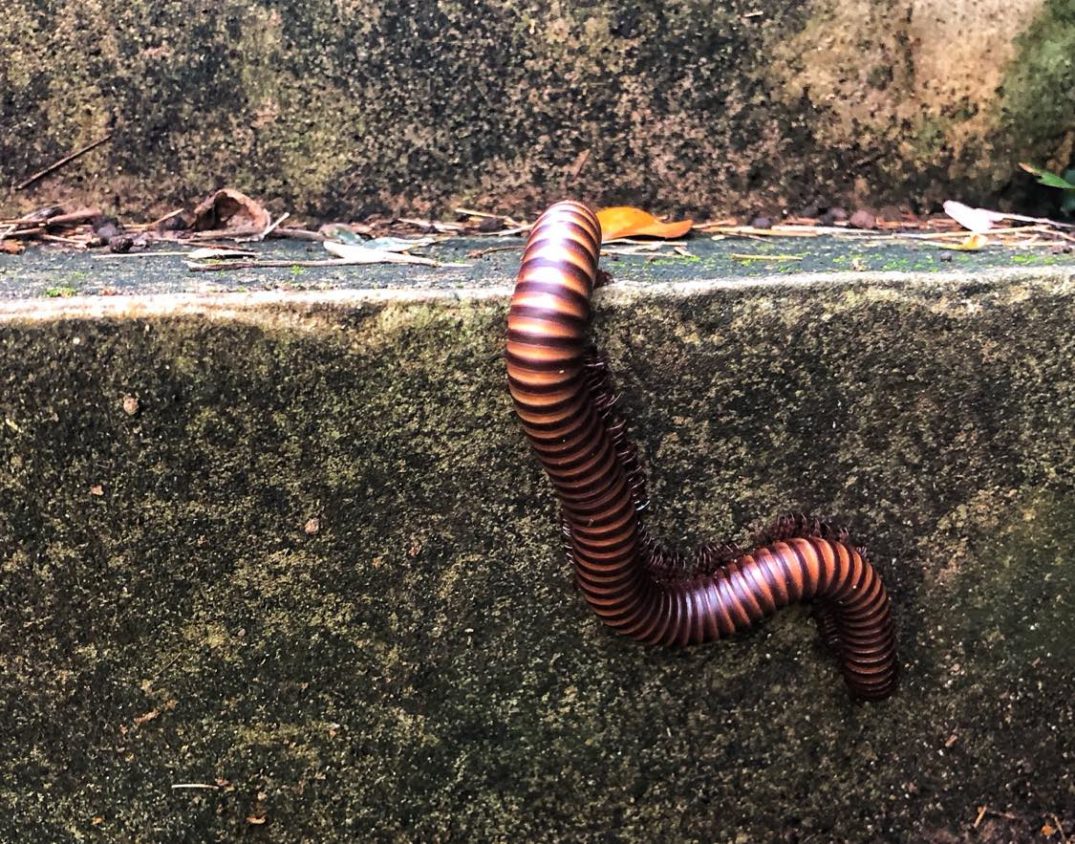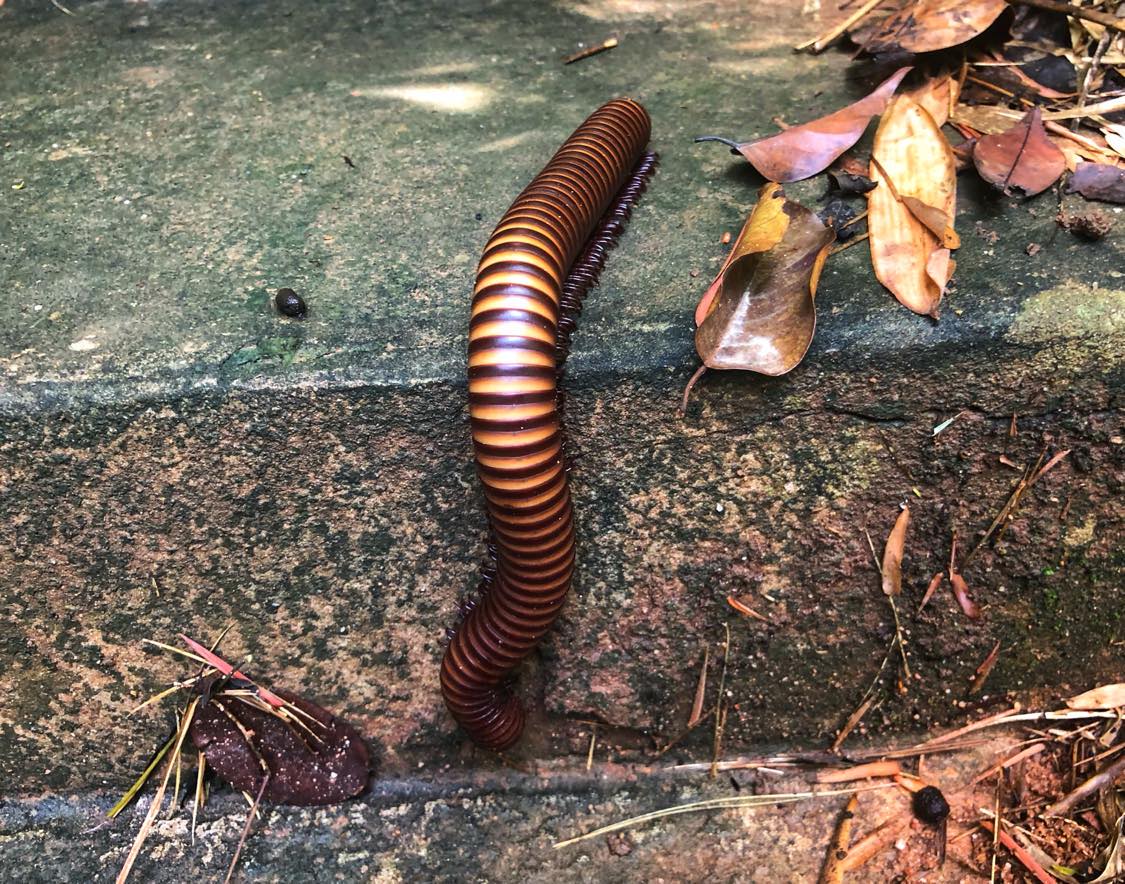Giant Millipedes in Thailand: Size, Danger & Edible?

Giant millipedes in Thailand have an average length of around 6-8 inches (15 – 20 cm). However, during the rainy season we have seen giant millipedes over 12 inches (30 cm) hanging out on the steps that go up the mountainside of Wat Tham Phu Pha Yon in Sakon Nakhon province.
The Thai name for a giant millipede is Ging Geu Yak (กิ้งกือยักษ์). However, in the Northeast of Thailand (Isaan), millipedes also go by the name Bong Kue (บ้งกือ), which means a caterpillar with many legs, and in the North of Thailand they often are called Mang Saen Teen (แมงแสนตี๋น).
Giant millipedes should always be left alone when you see them in the forests or gardens of Thailand, as they are great fertilizers of the soil, eating up decaying leaves and other organic matter, and adding valuable nutrients into the Earth.
Are Giant Thai Millipedes Dangerous?
Unlike their cousins the centipede, giant millipedes in Thailand don’t bite and aren’t very dangerous. However, that doesn’t mean that they will cause no harm, and it’s okay to pick them up and play with them. Many species of millipedes in Thailand release a toxin from the sides of their body that can produce a rash on your skin which looks like a burn and is painful for up to 2 or 3 days.
Almost every year there are reports of small Thai children getting a minor burn on their toes by accidentally placing their foot into a sock or shoe that has a millipede hiding in it. If you do get burned by a giant millipede, you can use the same folk medicine cures we shared for treating a scorpion sting in Thailand.

Are Millipedes Eaten in Thailand?
Many Thai people love eating insects like crickets, silkworms, and fire ant eggs (Isaan caviar). However, millipedes are generally not eaten. One exception is in the Thai military where they conduct survival training and show young soldiers the kinds of millipedes and other insects that are edible. Another exception is Gung Bok curry paste (น้ำยากุ้งบก), which is a special ingredient that some Thais put into Khanom Jeen. The term Gung Bok (กุ้งบก) is another name for the millipede in Thailand. So, this is a curry paste made with millipedes.
What Do Millipedes Symbolize?
Many Thais view millipedes as a symbol of abundance and good fortune, especially when they are see at the Thai temple where they have gone to make merit. They also are viewed as a sign that patience is required in your life. Thus no rash decisions should be made after a giant millipede has crossed your path in Thailand. Instead, you should slowly and carefully step in the future.
- Affirmations in Buddhism & Thailand - June 7, 2025
- Speak Thai Naturally Without the Gymnastics - April 20, 2025
- The Best Learn Thai Podcast and YouTube Channel - April 10, 2025




